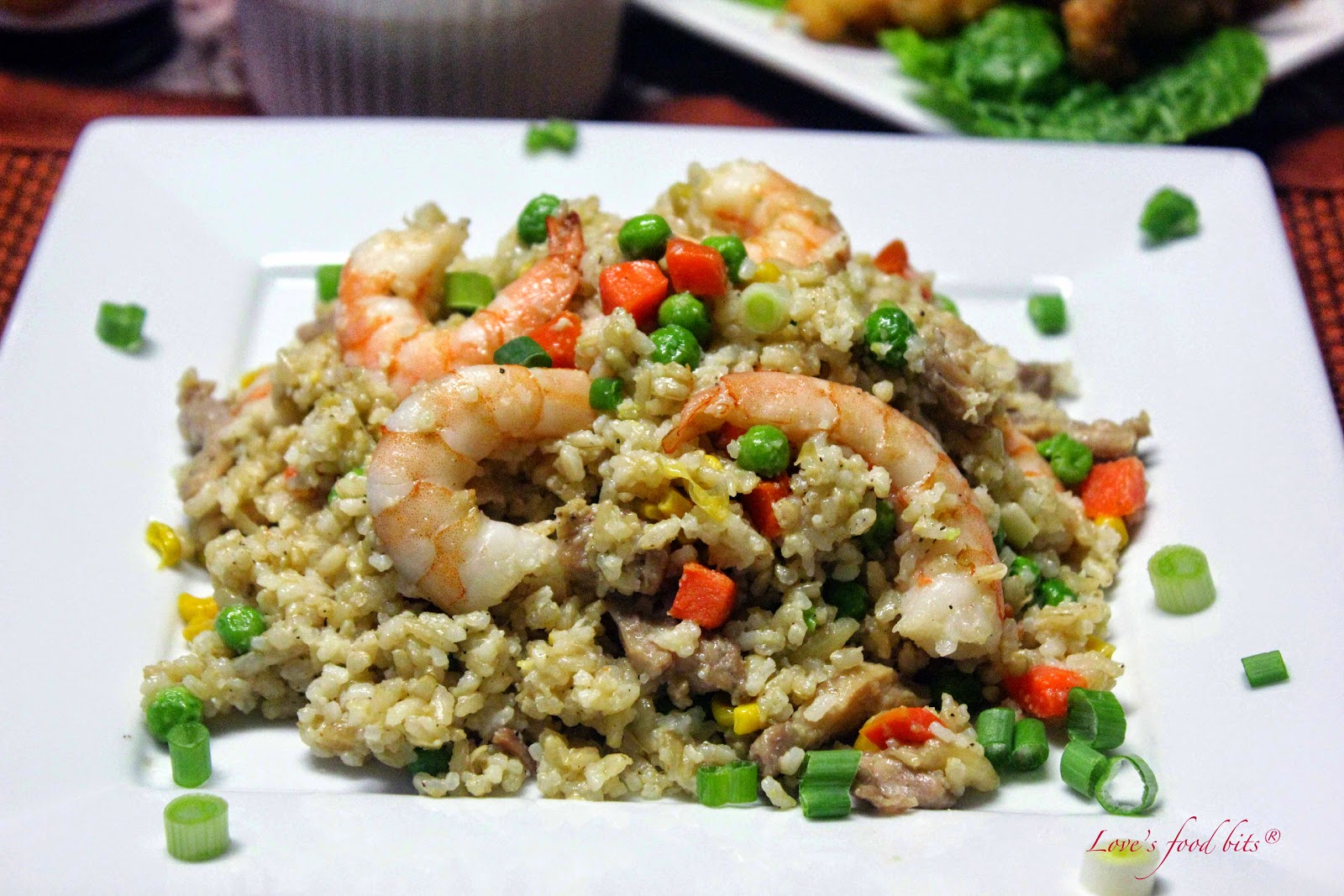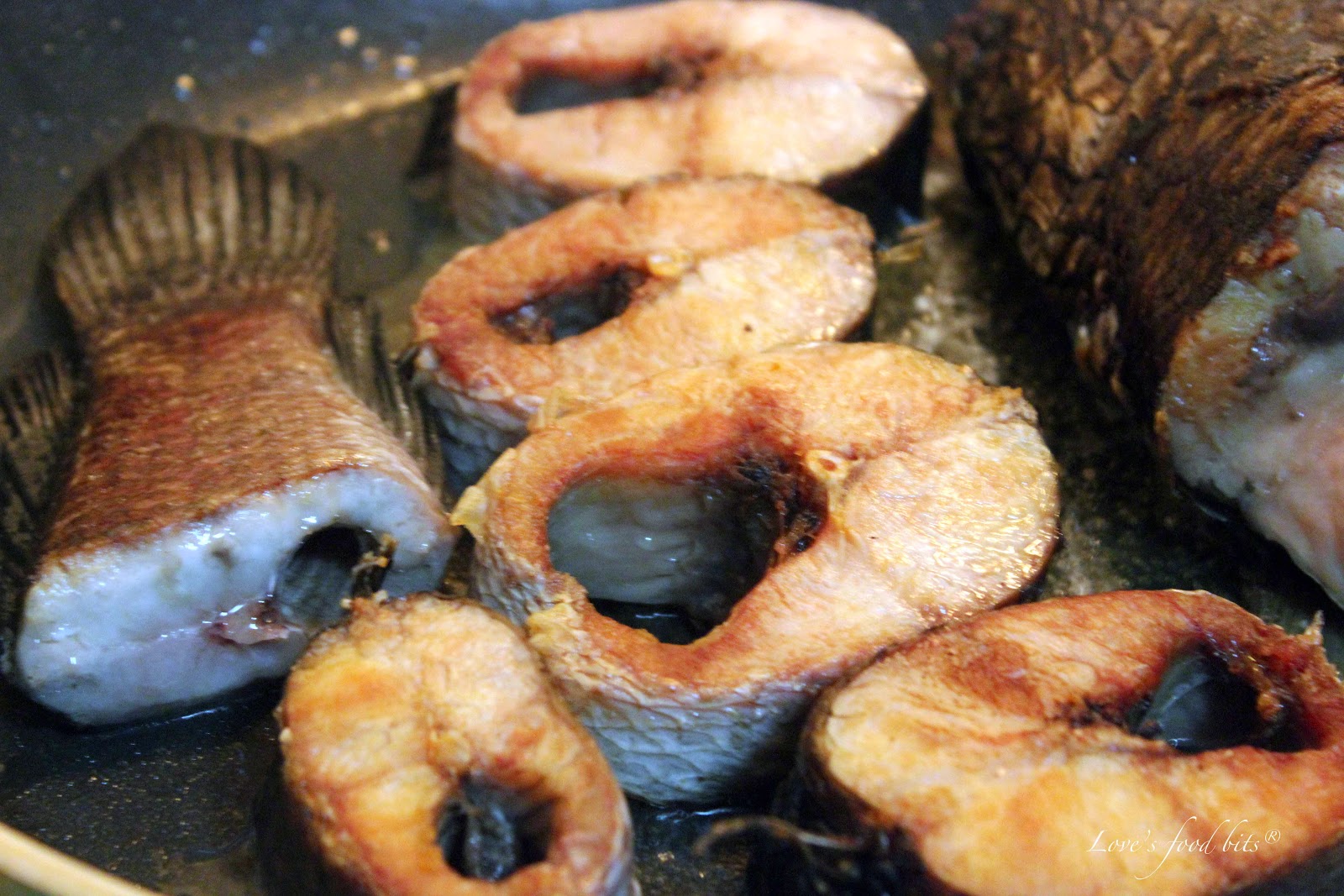Brown rice is rarely use for fried rice. However, since this is the only rice available at home, whenever there's leftover, it will end up like this. It could be as simple as garlic fried rice or as fancy as this.
Ingredients:
6-8 cups Leftover Brown Rice
1/2 lb. Skinless/Boneless Chicken Thigh (sliced into small pieces)
1/4 lb. Shrimps (washed, shell removed)
1 pkg. Carrots and Peas Mix Vegetables (thawed and washed)
4 pcs. Eggs (Beaten and fried)
1 medium Onion (peeled and chopped)
5-7 cloves Garlic (peeled and minced)
4 tbsp. Sesame Oil
Salt and Pepper to taste
Let's Cook!
- In a medium pan, heat 2 tablespoons of sesame oil and saute half of the garlic, followed by onion. Saute until fragrant.
- Add in chicken, stir then add salt and pepper. Cook until the water from the chicken is all gone.
- When the chicken is done, add shrimps. Stir and cook for 2-3 minutes.
- Add mixed vegetables, stirring continuously for about 3 minutes.
- Remove from heat and set aside.
- Heat a larger pan and put the remaining 2 tablespoons of oil then add the remaining garlic.
- Put in brown rice, churning once in a while to evenly cook it.
- When almost done, add in the cooked chicken, shrimps and vegetable mixture and fried eggs.
- Adjust seasoning. Mix thoroughly to make sure that the fried rice, chicken, shrimps and vegetable mixture are fully incorporated.
- Dish out and serve with your favorite dish or serve as it is.










































